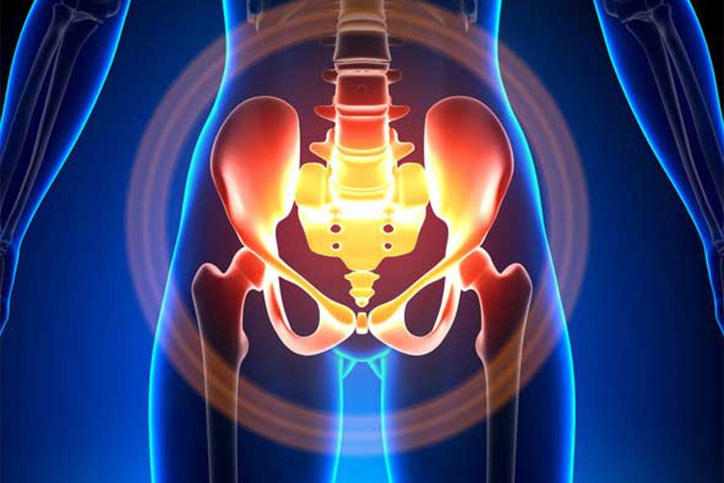Chronic pelvic pain (CPP) is the discomfort that is felt in the lower area of the belly button, specifically between the hip region. The pain typically lasts between 3 and 6 months or longer in some situations.
CPP, sometimes referred to as Prostatodynia can occur as a result of different conditions and it could be a problem with the digestive or genitourinary system. Other times, CPP can occur without any existing condition. If you’re experiencing pelvic pain and it’s existed for a while, then you should find a way to deal with it. Here are some of the most efficient ways of dealing with chronic pelvic pain.

Over-the-counter pain relievers
While experiencing pelvic pain on a mild level, you can visit the doctor to get pain relievers like ibuprofen or acetaminophen as a first step to relieve pelvic pain. Ensure that you follow the directed prescription. Indiscriminate use of painkillers can irritate the linings of the stomach, causing various gut issues, such as indigestion, gastritis, stomach ulcers, and gastrointestinal bleeding. Therefore, it is important to note that people with certain medical conditions such as PUD should not take specific pain relievers, especially NSAIDs.
Keep exercising and moving
It may seem far-fetched, but exercising while experiencing CPP can have a great impact on your healing process. Exercising and consistent movement will increase blood flow in your body system. It also helps to release endorphins, which act as natural painkillers. With about 30 to 45 minutes of moderate exercise daily, or at least 5 times each week, you can experience positive changes in your pelvic pain.
Take advantage of the heat
Another way to increase the blood flow in your body is by exposing the area of pain to some heat. Applying a warm compress or heat pad to the belly or other affected areas can provide relief, specifically during those intense moments. An increase in blood flow helps to ease the pain you feel during pelvic pain.
Take more supplements
It’s also possible that the lack of important minerals and vitamins in the body can increase the susceptibility of a person to pains like chronic pelvic pain. In essence, taking certain supplements like magnesium, Vitamins D, and E can improve the state of the body and soothe the pelvic region of the body of chronic pelvic pain.
However, ensure that the over-the-counter supplements are prescribed by the doctor. Also, herbs like willow, licorice, and Dong Quai help to ease inflammation.
Stem cell therapy for chronic pelvic pain
Conventional treatments for chronic pelvic pain may not do the trick. Many times, patients may be unsatisfied with the results of these treatments and need something better. It’s at this point that regenerative medicine comes in.
Stem cell therapy, specifically amniotic stem cells have for the last few years proven to be effective for chronic pelvic pain. Amniotic stem cell therapy uses the regenerative and anti-inflammatory properties of the amniotic stem cells to treat medical conditions that would otherwise require invasive surgery. Chronic pelvic pain is one of those conditions.

R3 Stem Cell offers stem cell therapy in Phoenix, AZ. At R3 stem cell centers, we ensure that our treatments are safe and effective without endangering any of your body parts. We deliver stem cell injections through the veins, tissue, affected joints, organs, and into the spinal fluid, depending on your condition.

Dr. David Greene
MD, PhD, MBA
Dr. David Greene, MD, PhD, MBA, is a pioneering leader in regenerative medicine and healthcare marketing. As a residency and fellowship-trained orthopedic surgeon, Dr. Greene transitioned from clinical practice to become the founder and CEO of R3 Stem Cell and US Lead Network, where he has revolutionized patient care and medical practice growth through innovative therapies and digital marketing strategies. He has authored two influential books on healthcare internet marketing, ranks among the top expert authors globally, and has been featured on the cover of Corporate Vision magazine for his impact on global regenerative therapies. Beyond his professional achievements, Dr. Greene is passionate about education, compassion, and continuous innovation.










Sorry, the comment form is closed at this time.